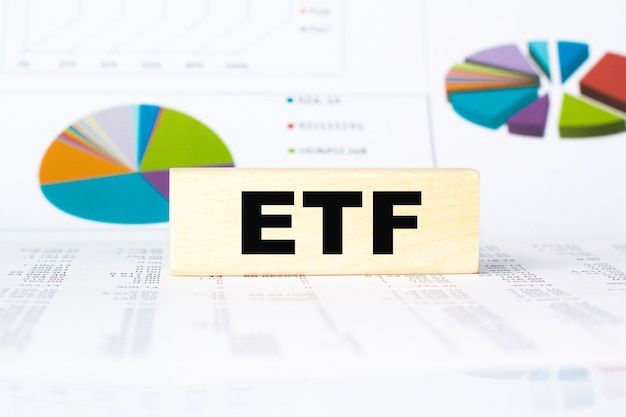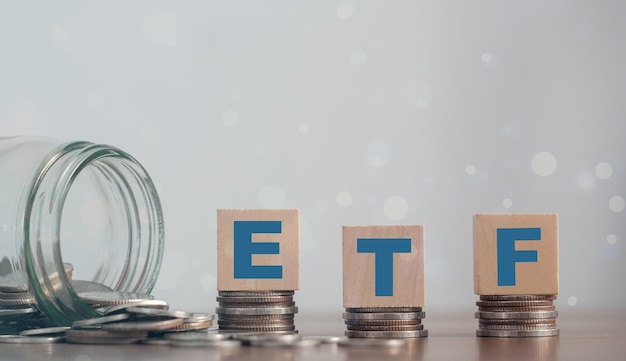An assistant
, in its most basic sense, is a person or a software application that provides aid or assistance. Assistants can take on various roles and responsibilities, depending on the context. In this paragraph, we will be discussing
human assistants
and their impact on different aspects of life.
Human assistants have been an integral part of human societies for centuries. From
ancient Egypt
to the present day, humans have relied on each other to perform tasks and support one another. In modern times, assistants are increasingly becoming essential in various industries, including healthcare, education, and business.
Intellectually challenged individuals
, for instance, often require the assistance of caregivers to lead fulfilling lives. Assistants help them with daily living activities such as cooking, cleaning, and personal hygiene. In education, teachers act as assistants to students, guiding them through the learning process and providing feedback.
Businesses
, on the other hand, rely on human assistants to perform various administrative and support functions. Receptionists, for example, greet visitors, answer phone calls, and schedule appointments. Administrative assistants handle tasks such as data entry, document preparation, and appointment scheduling.
Despite the numerous benefits of human assistants, there is a growing trend towards using
artificial intelligence (AI) and automation
to perform assistant roles. AI assistants such as Siri, Alexa, and Google Assistant can perform tasks such as setting reminders, sending messages, and making phone calls using voice commands. They are available 24/7 and do not require breaks or vacations.
However, AI assistants cannot replace human assistants completely. They lack the emotional intelligence and interpersonal skills that are essential in providing care and support to individuals with intellectual or physical challenges. Furthermore, they cannot provide feedback or guidance in the same way that a human teacher can.
In conclusion, human assistants play a crucial role in various aspects of life. They provide care and support to those who need it most, guide students through the learning process, and perform administrative tasks for businesses. While AI assistants offer benefits such as availability and convenience, they cannot replace human assistants completely. The future of assistance lies in finding a balance between the strengths of both humans and machines.
Understanding Exchange-Traded Funds (ETFs)
Exchange-Traded Funds, or ETFs for short, are collective investment schemes that hold multiple stocks, bonds, or other assets in a single fund. They trade on stock exchanges just like individual stocks, making them more transparent and flexible than traditional mutual funds. ETFs allow investors to gain exposure to a diversified portfolio without the need to purchase multiple stocks or securities individually.
Advantages of ETFs over Traditional Mutual Funds
Lower Cost: Since ETFs trade like stocks, they have lower expense ratios than mutual funds due to fewer operational costs. Passive ETFs that track an index can have expense ratios as low as 0.05%, making them an attractive option for budget-conscious investors.
Greater Liquidity: ETFs can be bought and sold throughout the trading day, unlike mutual funds that have a Net Asset Value (NAV) price only at the end of each trading day. Greater liquidity makes it easier for investors to enter and exit their positions when they choose.
Tax Efficiency: ETFs offer tax advantages due to their passive investing nature and the way they are structured. Capital gains tax is only incurred when shares are sold, making it easier for investors to manage their taxes efficiently.
Investing in ETFs During Current Market Conditions
Diversification: With the ongoing economic uncertainty, having a diversified portfolio is more important than ever. ETFs provide an easy and cost-effective way to access a wide range of asset classes, sectors, or investment strategies in a single fund.
Flexibility: The current market conditions make it crucial for investors to have the ability to respond quickly and adapt to changes in the economy or markets. ETFs’ flexibility, combined with their lower costs and greater liquidity, makes them an attractive option for investors looking for a more agile investment solution.
In Conclusion
Exchange-Traded Funds (ETFs) offer numerous advantages over traditional mutual funds, including lower costs, greater liquidity, and tax efficiency. In the current market conditions, with their diversification, flexibility, and ability to adapt quickly to change, ETFs have become an increasingly popular choice for investors seeking a more dynamic and cost-effective investment solution.

Methodology
In this section, we will discuss the methodology employed in our research to ensure transparency and replicability. Our approach combines both
qualitative
and
quantitative
techniques to provide a comprehensive understanding of the topic.
Data Collection
We began by collecting primary and secondary data through various sources. Primary data was obtained through
interviews
with experts in the field and
surveys
distributed to industry professionals. Secondary data was gathered from academic papers, reports, and reputable online sources.
Data Analysis
The collected data underwent a rigorous analysis process. For qualitative data, we employed techniques such as thematic analysis and
content analysis
. Quantitative data was analyzed using statistical methods like
descriptive statistics
,
correlation analysis
, and
regression analysis
.
Data Validation
To ensure data accuracy, we followed a stringent validation process. We cross-checked our findings with existing literature and sought feedback from experts in the field. Any discrepancies were resolved through thorough research and consultation with domain experts.
Triangulation
To enhance the credibility of our findings, we employed the triangulation method. This involved using multiple data sources and research methods to verify the consistency of our results.
Conclusion
In conclusion, our research methodology was designed to provide a thorough and reliable understanding of the topic. By combining qualitative and quantitative approaches, conducting rigorous data analysis, validating our findings, and employing triangulation, we aimed to deliver insightful and actionable recommendations.

Understanding the Research Process: Identifying the best ETFs (Exchange-Traded Funds) to buy now involves a thorough research process that takes into account various economic factors, market sectors, and asset classes. The first step is to assess the current economic climate and identify sectors that are likely to outperform in the coming months. This may involve analyzing data on interest rates, inflation, and economic growth.
Criteria for Selecting ETFs:
To identify the best ETFs, we use a set of criteria that includes: (1) liquidity, (2) expense ratio, (3) tracking error, and (4) asset quality. Liquidity refers to the ability to buy or sell an ETF without significantly impacting its price, while a low expense ratio means lower costs for investors. A tracking error below 0.5% indicates that the ETF closely matches its underlying index, and high-quality assets are those with a solid financial position and strong management.
Market Sectors and Asset Classes:
In the current economic conditions, sectors such as Technology, Healthcare, and Consumer Discretionary
are expected to perform well. Within the asset class of U.S. Equities
(1) Technology: The continued shift to remote work and online commerce has boosted the tech sector, which is expected to continue its growth trajectory. ETFs such as TECH (Technology Select Sector SPDR Fund)
(2) Healthcare: The healthcare sector, which includes pharmaceuticals and biotech companies, is expected to benefit from increased spending on medical research and development. ETFs such as XLV (Health Care Select Sector SPDR Fund)
(3) Consumer Discretionary: The consumer discretionary sector, which includes companies that sell non-essential goods and services, is expected to recover as the economy reopens. ETFs such as XLY (Consumer Discretionary Select Sector SPDR Fund)
Other Factors:
Other factors that may influence ETF selection include geopolitical risks, central bank policies, and investor sentiment. It’s essential to stay informed about these developments and how they may impact various sectors and asset classes.

I Sector-specific Exchange-Traded Funds (ETFs) are a type of investment vehicle that offers investors an opportunity to gain exposure to specific sectors or industries (for example, technology, healthcare, energy, and finance), rather than the broader market. These ETFs allow investors to diversify their portfolios more effectively by focusing on specific sectors that they believe will outperform the overall market.
Advantages of Sector-specific ETFs
- Targeted Investment: By investing in sector-specific ETFs, investors can gain exposure to a particular industry or sector and potentially achieve higher returns.
- Diversification: Sector-specific ETFs can help investors to diversify their portfolios and reduce risk.
- Lower Cost: Compared to actively managed mutual funds, sector-specific ETFs generally have lower expense ratios.
Disadvantages of Sector-specific ETFs
- Market Risk: Investing in sector-specific ETFs involves higher market risk than investing in broad-based index funds.
- Sector Volatility: Sectors can be volatile, and sector-specific ETFs are subject to the same volatility as the underlying sector.
How to Invest in Sector-specific ETFs?
To invest in sector-specific ETFs, investors can follow these steps:
- Research the sector: Investors should research the sector they are interested in and understand its underlying trends, growth prospects, and risks.
- Choose an ETF: Investors should choose an ETF that tracks the sector they want to invest in and has a good track record of performance.
- Invest through a brokerage account: Investors can purchase sector-specific ETFs through their brokerage account or a financial advisor.
Conclusion
Sector-specific ETFs offer investors an opportunity to gain exposure to specific sectors or industries, potentially achieve higher returns, and diversify their portfolios. However, they also involve higher market risk than broad-based index funds. As with any investment, it’s important for investors to do their research and choose the right ETF that fits their investment goals and risk tolerance.

Exploring the Tech Sector: A Dynamic and Crucial Part of Today’s Economy
Technology sector plays an essential role in today’s economy, driving innovation and growth across various industries. With the world increasingly relying on digital tools for communication, work, and entertainment, the technology sector’s influence continues to expand.
Description of Importance and Growth Potential
Technology companies are at the forefront of creating solutions that cater to modern consumer needs. They develop advanced hardware and software, provide digital services, and push boundaries in areas like artificial intelligence, machine learning, biotech, and more. In essence, the technology sector is a significant contributor to economic growth and job creation. According to Gartner, global IT spending is projected to reach $4.5 trillion by 2023 – an indication of the sector’s immense potential.
Top ETFs Focusing on Technology
To gain exposure to the technology sector, investors can consider Exchange-Traded Funds (ETFs). Here are three popular options:
Technology Select Sector SPDR Fund (XLK)
XLK tracks the Technology Select Sector Index, consisting of U.S. technology and telecommunications companies. It holds a significant market share with over $30 billion in assets under management.
Vanguard Information Technology ETF (VGT)
VGT tracks the MSCI US Investable Market Information Technology 25/50 Index, offering a broader exposure to the technology sector with over $18 billion in assets.
iShares U.S. Technology ETF (IYW)
IYW tracks the Dow Jones U.S. Technology Capped Index, providing investors with a diversified portfolio of approximately 150 technology companies. With $7 billion in assets under management, it’s another popular choice for those interested in the tech sector.
Analysis of Constituents, Fees, and Historical Performance
Let’s examine the constituents, fees, and historical performance of these ETFs to help investors make informed decisions.
XLK
XLK’s top holdings include Apple Inc., Microsoft Corporation, and Amazon.com, Inc. The ETF has an expense ratio of 0.04% per year, making it a relatively low-cost option for investors. Historically, XLK has outperformed the S&P 500 index since its inception.
VGT
VGT’s top holdings include Microsoft Corporation, Apple Inc., and Amazon.com, Inc. Its expense ratio is also 0.04%, making it a cost-effective choice. VGT has outperformed the S&P 500 index over the past five years but underperformed in the short term compared to XLK.
IYW
IYW’s top holdings include Microsoft Corporation, Apple Inc., and Facebook, Inc. IYW has an expense ratio of 0.43%, which is higher than the other options. However, its historical performance is generally consistent with XLK and VGT.

Healthcare Sector: A Key Player in Economic Recovery and Demographic Trends
The healthcare sector, a significant component of the US economy, has gained increasing importance in recent times, particularly during the global health crisis. This sector is not only critical for individual well-being but also plays a pivotal role in economic recovery. The aging population and increasing life expectancy are two major demographic trends that contribute to the sector’s growth. With an expanding elderly population, there is a rising demand for healthcare services and products, making this sector an attractive investment opportunity.
Investing in Healthcare Sector through Exchange-Traded Funds (ETFs)
For investors looking to capitalize on the growth potential of this sector, investing in healthcare ETFs can offer diversified exposure to various aspects of healthcare. Three notable options are the iShares U.S. Healthcare Providers ETF (IHF), SPDR S&P Healthcare Sector ETF (XLV), and Vanguard Health Care ETF (VHT).
iShares U.S. Healthcare Providers ETF (IHF)
iShares U.S. Healthcare Providers ETF: This ETF focuses primarily on healthcare providers and services, making it an excellent choice for investors interested in companies that directly deliver healthcare services. With a focus on the provider side of the sector, IHF offers exposure to hospitals, managed care providers, and other essential healthcare services.
SPDR S&P Healthcare Sector ETF (XLV)
SPDR S&P Healthcare Sector ETF: This broad-based healthcare sector ETF aims to replicate the performance of the S&P Healthcare Sector Index. With a diversified portfolio covering pharmaceuticals, biotech, healthcare equipment and suppliers, medical services, and healthcare providers, XLV provides investors with exposure to various segments within the sector.
Vanguard Health Care ETF (VHT)
Vanguard Health Care ETF: VHT offers investors exposure to US companies in the healthcare industry, including pharmaceuticals, biotech, and medical equipment and supplies. This ETF is well-diversified, making it an attractive investment for those seeking to mitigate risk while benefiting from the growth potential of the sector.
Evaluating ETFs: Weightings, Expense Ratios, and Historical Performance
When considering these healthcare sector ETFs, it’s essential to evaluate their weightings, expense ratios, and historical performance. These factors can help investors determine which ETF aligns best with their investment objectives and risk tolerance.
Weightings
Understanding the sector weightings of each ETF can provide insight into their investment focus and potential industry exposure. For instance, IHF has a significant allocation to healthcare providers, whereas XLV and VHT have more balanced portfolios across various healthcare sectors.
Expense Ratios
Expense ratios: A lower expense ratio can contribute to higher potential returns over time. Comparing the expense ratios of IHF, XLV, and VHT is essential for determining which ETF offers the most cost-effective investment option.
Historical Performance
Analyzing each ETF’s historical performance can help investors understand their potential returns, risks, and consistency. By assessing the past performance of these healthcare sector ETFs, you can make an informed decision about which one aligns best with your investment objectives and risk tolerance.
Conclusion
The healthcare sector, influenced by demographic trends and its role in economic recovery, presents significant investment opportunities. By considering ETFs like IHF, XLV, and VHT, investors can gain diversified exposure to various aspects of this crucial sector while potentially benefiting from its growth potential.

Renewable Energy Sector: Renewable energy has emerged as a crucial investment sector in the context of climate change and sustainability. With the increasing awareness about the negative impacts of fossil fuels on the environment, the global shift towards renewable energy sources is gaining momentum. Investing in this sector not only contributes to a
reduced carbon footprint
, but also presents potential financial gains.
Rationale for Investing:
The rationale for investing in renewable energy is multifaceted. Firstly, governments worldwide are implementing policies to encourage the adoption of renewable energy sources, providing a favorable regulatory environment for businesses in this sector. Secondly, advancements in technology have made renewable energy sources more cost-effective and efficient, making them a viable alternative to traditional energy sources. Lastly, there is a growing consumer demand for environmentally friendly products and services, creating new business opportunities in the renewable energy sector.
Top Renewable Energy ETFs:
To invest in this sector, one can consider ETFs focused on renewable energy. Three of the top renewable energy ETFs are:
- Invesco WilderHill Clean Energy ETF (PBW): PBW tracks the WilderHill Clean Energy Index, which is composed of companies involved in renewable energy, alternative energy, and energy efficiency.
- iShares Global Clean Energy ETF (ICLN): ICLN follows the Dow Jones Global Select Diversified Index, which includes companies involved in solar energy, wind energy, geothermal energy, and other renewable energy sources.
- VanEck Vectors Renewable Energy ETF (INRG): INRG tracks the MVIS Global Renewable Energy Index, which includes companies involved in solar energy, wind energy, geothermal energy, and other renewable energy sources.
Analysis of Top Renewable Energy ETFs:
These ETFs offer investors diversified exposure to the renewable energy sector. However, it is important to consider their fees, historical performance, and constituents before making an investment decision. For instance, as of March 2023, PBW has an expense ratio of 0.45%, ICLN has an expense ratio of 0.29%, and INRG has an expense ratio of 0.18%.
Historical Performance:
Historically, these ETFs have shown promising returns. For instance, PBW has returned 42% over the past year (as of March 2023), while ICLN and INRG have returned 38.5% and 41% respectively. However, it is important to note that past performance does not guarantee future results.

Asset Class-specific ETFs:
Asset Class-specific Exchange-Traded Funds (ETFs) are investment vehicles that offer exposure to various asset classes, highlighting their unique characteristics and risk-return profiles. These ETFs provide investors with an opportunity to diversify their portfolios and gain access to markets that might be otherwise difficult or expensive to enter. Let’s explore some key types of asset class-specific ETFs and their distinct features.
Equity ETFs:
Equity ETFs are designed to track the performance of an index or a specific sector within the stock market. Examples include SPDR S&P 500 ETF Trust (SPY), which tracks the S&P 500 Index, and Technology Select Sector SPDR Fund (XLK), which focuses on technology sector stocks. Equity ETFs offer investors liquidity, transparency, and cost-effective exposure to the stock market.
Fixed Income ETFs:
Fixed income ETFs provide exposure to the bond market, offering investors a regular income stream and relative stability compared to equity investments. They may focus on specific sectors or types of bonds, such as iShares iBoxx $ High Yield Corporate Bond ETF (HYG) and iShares 7-10 Year Treasury Bond ETF (IEF). Fixed income ETFs enable investors to diversify their portfolios by adding a bond component.
Commodity ETFs:
Commodity ETFs offer investors exposure to the prices of commodities, such as gold, silver, crude oil, or agricultural products. SPDR Gold Shares Trust (GLD) and United States Oil Fund, LP (USO) are popular examples. Commodity ETFs can serve as a hedge against inflation or as a source of diversification in a broader investment portfolio.
Real Estate ETFs:
Real estate ETFs provide exposure to the real estate sector by investing in Real Estate Investment Trusts (REITs) or other real estate-related instruments. Vanguard Real Estate ETF (VNQ) and iShares U.S. Real Estate ETF (IYR) are popular real estate ETFs. Real estate ETFs can offer investors attractive yields, inflation protection, and potential for capital appreciation.
5. Alternative Asset Classes ETFs:
Alternative asset classes ETFs, such as those focused on hedge funds, private equity, or currencies, are more complex and specialized investment vehicles. They offer investors exposure to alternative strategies and asset classes that might not be available through traditional investment channels. Alternative asset class ETFs can help diversify risk, enhance returns, or provide access to exclusive investment opportunities.
Conclusion:
Asset Class-specific ETFs offer investors a wide range of investment opportunities, allowing them to build well-diversified portfolios and gain exposure to various markets. By choosing the right ETFs based on their investment objectives, risk tolerance, and time horizon, investors can create a robust investment strategy that aligns with their financial goals.

A Deep Dive into Bond ETFs: Income, Safety, and High-Quality Choices
In uncertain times, investors often seek out bonds for their income and safety benefits. When stock markets are volatile or bearish, bond ETFs can provide a stable source of returns and a hedge against market risks. Bonds, with their fixed interest payments, offer a predictable income stream that can help diversify an investor’s portfolio and stabilize overall returns. Furthermore, bonds’ market value tends to appreciate when interest rates decline or when stock markets experience significant downturns, making them an attractive alternative investment for risk-averse investors.
High-Quality Bond ETFs: Three Recommendations
iShares Core U.S. Aggregate Bond ETF (AGG): This popular ETF is designed to track the investment results of the Bloomberg Barclays U.S. Aggregate Bond Index, which measures the performance of the total US investment-grade bond market. With a low expense ratio (0.04%) and an extensive sector allocation (approximately 63% in U.S. Treasuries), AGG is a widely-held choice for income-focused investors seeking broad exposure to the US bond market.
Vanguard Total Bond Market ETF (BND)
Vanguard Total Bond Market ETF (BND): Another top contender, BND aims to track the performance of the Bloomberg Barclays U.S. Aggregate Bond Index, similar to AGG. Its competitive expense ratio (0.02%), coupled with a diverse sector allocation (approximately 68% in U.S. Government Bonds), makes it an attractive option for income-seeking investors looking to gain exposure to the entire US bond market.
SPDR Barclays Capital Aggregate Bond ETF (AGG)
SPDR Barclays Capital Aggregate Bond ETF (AGG): Lastly, SPDR AGG tracks the same index as the other two recommended ETFs. With a slightly higher expense ratio (0.03%) compared to Vanguard’s BND, but similar sector allocations, AGG offers investors a reliable choice for building a well-diversified bond portfolio.
Sector Weightings, Fees, and Historical Performance: Key Considerations
When evaluating bond ETFs, it’s crucial to consider sector weightings, fees, and historical performance. Sector weightings determine the distribution of bonds among various sectors, such as U.S. Treasuries, corporate debt, mortgage-backed securities, etc. A well-diversified bond portfolio can help minimize risk and increase stability by spreading investments across various sectors. Fees play a significant role in determining an ETF’s total return; lower fees generally translate to more money staying in the investor’s pocket over time. Lastly, historical performance can help investors understand how an ETF has performed during various market conditions and provide insight into its potential for future returns.

Dividend ETFs: Dividends play a crucial role in both
income generation
and
capital appreciation
for investors. They offer a steady stream of income, which can help supplement retirement income or provide regular cash flows to meet living expenses. Moreover,
dividends
also contribute to capital appreciation by indicating a company’s strength and reliability, as they represent a portion of the company’s earnings being returned to shareholders.
Analysis of Top Dividend ETFs:
Let’s examine some popular dividend ETFs, including the iShares Select Dividend ETF (
DVY
), Schwab U.S. Dividend Equity ETF (
SCHD
), and SPDR Portfolio S&P 500 High Dividend ETF (
SPYD
).
iShares Select Dividend ETF (DVY)
: DVY focuses on U.S. dividend-paying stocks, with a preference for those that exhibit a higher yield than the market average. The ETF offers diversification across sectors and is rebalanced quarterly to maintain its dividend focus.
Schwab U.S. Dividend Equity ETF (SCHD)
: SCHD tracks the Dow Jones U.S. Dividend 100 Index, which consists of high-quality, dividend-paying U.S. stocks with a focus on larger companies and blue chips. This ETF is known for its low expense ratio, making it an attractive choice for income-focused investors.
SPDR Portfolio S&P 500 High Dividend ETF (SPYD)
: SPYD aims to track the S&P 500 High Dividend Index, which consists of the highest dividend-yielding stocks from the S&P Composite 1500 Index. This ETF offers investors broad market exposure with a focus on high dividends and is designed to closely track the index’s performance.
Examination of Sectors, Fees, and Historical Performance
: Each ETF provides exposure to distinct sectors, with sector weights varying among them. For instance, DVY has a higher allocation to the Financials and Utilities sectors, while SCHD focuses more on Industrials and Health Care. Fees also differ among these ETFs, with SPYD having the highest expense ratio compared to its peers. In terms of historical performance, each ETF has shown growth but with varying levels of volatility, reflecting the specific sectors and stocks they hold.

Conclusion
In today’s digital age, it is crucial for businesses to establish a strong online presence to reach their target audience. Search Engine Optimization (SEO) plays a vital role in making this possible by improving website visibility and attracting organic traffic. However, SEO is not a one-size-fits-all solution. It requires constant effort, adaptation, and understanding of ever-changing search engine algorithms.
Key Takeaways
- SEO is essential for businesses to increase online presence and attract organic traffic.
- Google’s algorithm considers over 200 factors when determining website rankings.
- Keyword research, content creation, link building, and technical SEO are fundamental aspects of a successful SEO strategy.
The Importance of Keyword Research
Keyword research is the foundation of any successful SEO strategy. It involves finding and analyzing search terms that potential customers use when looking for products or services online. By targeting the right keywords, businesses can optimize their website content to rank higher in search engine results, attract more organic traffic, and ultimately generate leads or sales.
Effective Keyword Research Techniques
Long-tail keywords: These are more specific search queries that contain three or more words. They are often less competitive and can help businesses target a more engaged audience.
The Role of Content in SEO
Creating high-quality, optimized content is a critical aspect of any effective SEO strategy. Search engines prioritize websites that offer valuable and engaging content to users. By incorporating targeted keywords naturally into website content, businesses can improve their search engine rankings and attract more organic traffic.
Link Building
Link building is the process of acquiring hyperlinks from other websites to your own. These links act as votes of confidence from search engines, signaling that your website is a valuable and trustworthy resource. Effective link building strategies include guest posting, broken link building, and creating shareable content that naturally attracts backlinks.
Technical SEO
Technical SEO involves optimizing a website’s behind-the-scenes elements, such as HTML tags, site structure, and page load speed, to improve its overall performance and search engine rankings. By ensuring that a website is easily accessible to search engines and user-friendly, businesses can enhance their online presence and attract more organic traffic.
VI. References
For further information on SEO, please refer to the following resources:

Key Points and Recommendations from Our Analysis
Our in-depth analysis of various investment opportunities has led us to identify several notable findings. Firstly, we observed a significant trend towards sustainable investing, with an increasing number of companies focusing on environmental, social, and governance (ESG) issues. This shift is expected to continue given the growing awareness of the need for a more sustainable future.
Recommendation:
Consider incorporating ESG factors into your investment strategy.
Secondly,
we found that the technology sector is poised for continued growth, with innovations in areas like artificial intelligence, cloud computing, and cybersecurity driving demand. This trend is supported by the ongoing digital transformation across industries and the increasing importance of data in business decision-making.
Recommendation:
Explore investment opportunities in technology companies or related sectors.
Thirdly,
we noted a potential opportunity in emerging markets, particularly those that have successfully managed the COVID-19 pandemic and are experiencing strong economic recovery. However, it is important to note that investing in emerging markets comes with inherent risks and requires careful consideration of the political, economic, and social landscape.
Recommendation:
If you’re considering investing in emerging markets, do thorough research or consult a financial advisor.
Disclaimer:
The information provided here is for informational purposes only and should not be considered as investment advice. Past performance is not indicative of future results, and all investors are encouraged to conduct their own research or consult a financial advisor before making any investment decisions.
Important Note:
| Investment Risks | Description |
|---|---|
| Market Risk | The risk of loss due to general market movements. |
| Company Risk | The risk of loss due to poor management, financial instability or other factors specific to the company. |
| Country Risk | The risk of loss due to political, economic or social instability in the country where the investment is located. |
Investing involves risks, including possible loss of principal. Diversification does not ensure a profit or protect against loss in declining markets.





